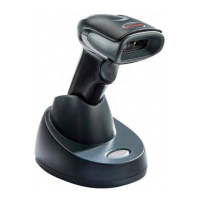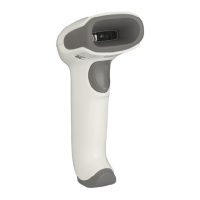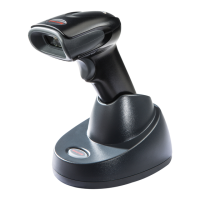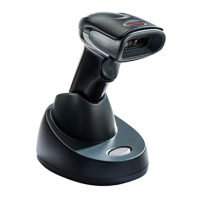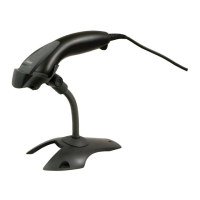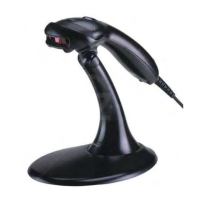70 Voyager XP User Guide
Auto Reconnect Mode set to 1
Maximum Link Attempts set to 0
Relink Time-Out set to 10
Scanner Power Time-Out Timer set to 1800
Note: See Scanner Power Time-Out Timer.
The scanner attempts to connect to the base or Access Point every 15 seconds,
measured from one attempt start to the next attempt start. After one half hour, the
scanner powers off.
Host Acknowledgment
Some applications require that the host terminal (or server) validate incoming bar-
code data (database look-up) and provide acknowledgment to the scanner
whether or not to proceed. In Host ACK Mode, the scanner waits for this acknowl-
edgment after each scan. Visual and audible acknowledgments provide valuable
feedback to the scan operator. The Host ACK functionality is controlled via a num-
ber of predefined escape commands that are sent to the scanner to make it behave
in different ways.
Note: System performance degrades when using Host ACK at rates lower than 9600 baud.
The following criteria must be met for the Host ACK to work correctly:
• The cordless system must be configured for Host Port RS232 (terminal ID = 000)
or USB COM Emulation (terminal ID = 130).
• RTS/CTS is defaulted off. You must enable it if the host system requires it.
• Host ACK must be set to On (page 71).
• A comma must be used as a terminator.
• The host terminal software must be capable of interpreting the barcode data,
make decisions based on the data content, and send out appropriate escape
commands to the scanner.
Escape commands are addressed to the scanner via “Application Work Groups.”
Once a command is sent, all scanners in a group respond to that command.
Because of this, it is recommended that each scanner is assigned to its own group
in Host ACK mode.
The commands to which the scanner responds are listed on page 72. The [ESC] is a
1B in hex. A typical command string is y [ESC] x, where “y” is the application work
group number, “[ESC] x” is the escape command, and the comma is the terminator,
which is required. (When “y” is not specified, the command is sent to the default
Application Work Group 0.)
Example: Commands may be strung together to create custom response sequences. An
example of a command string is listed below.
0[ESC]4,[ESC]5,[ESC]6,

